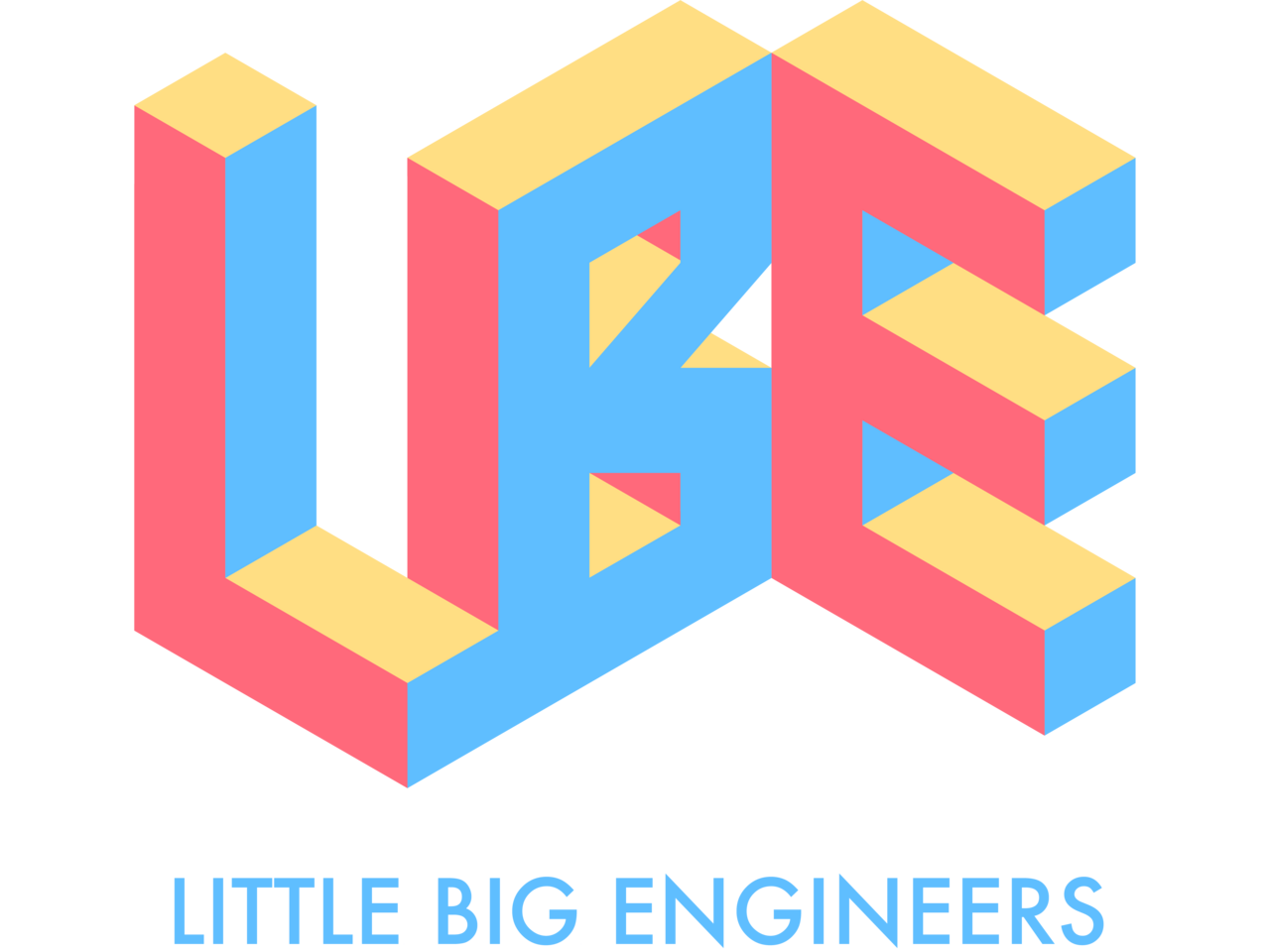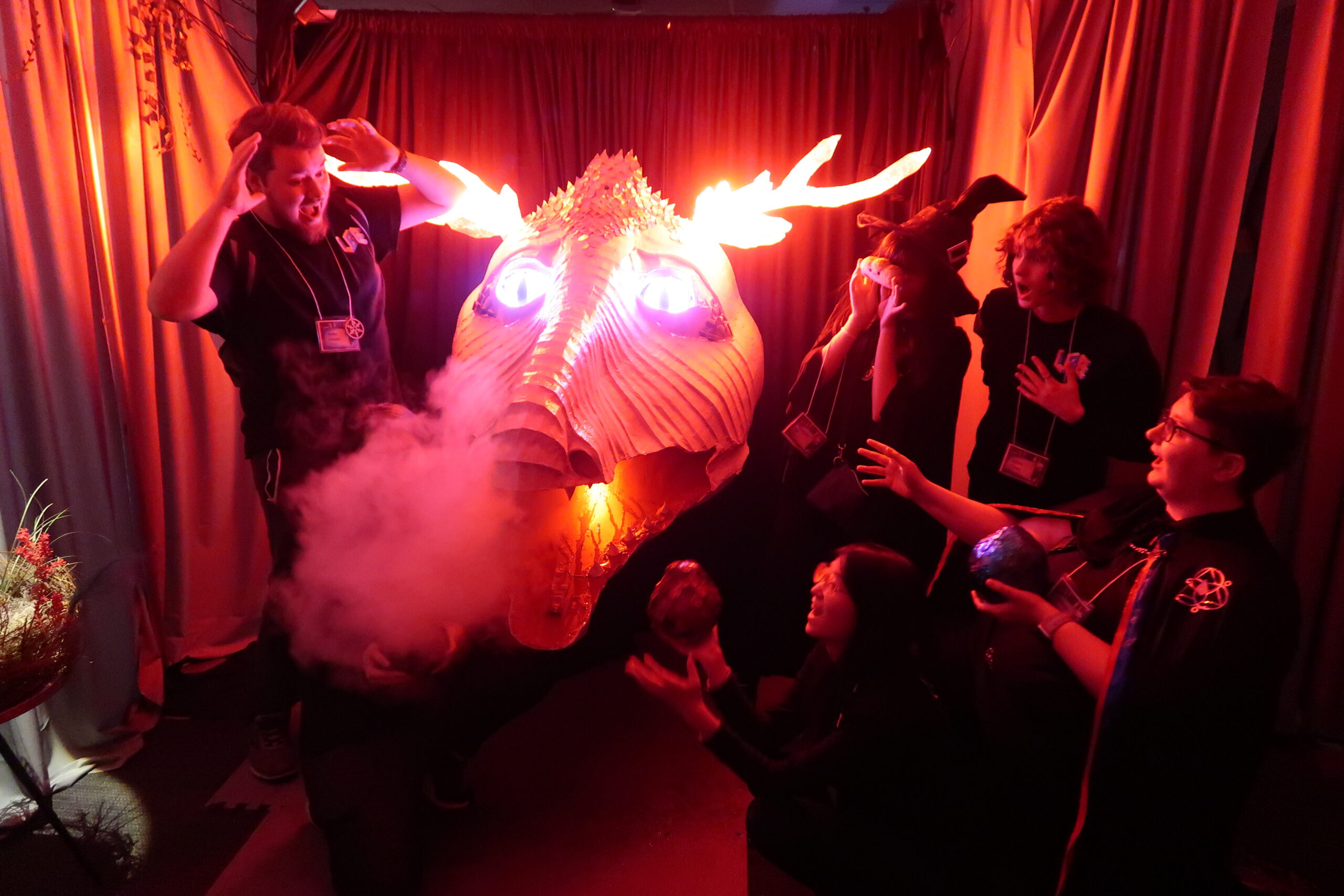Welcome to the last week for Little Big Engineers! On Friday of this week, from 6-10pm, we welcomed guests to our project room to experience Return of the Dragon, our interactive walkthrough attraction. But let’s not get ahead of ourselves- plenty of last-minute work got us to this point!
Acting Rehearsals
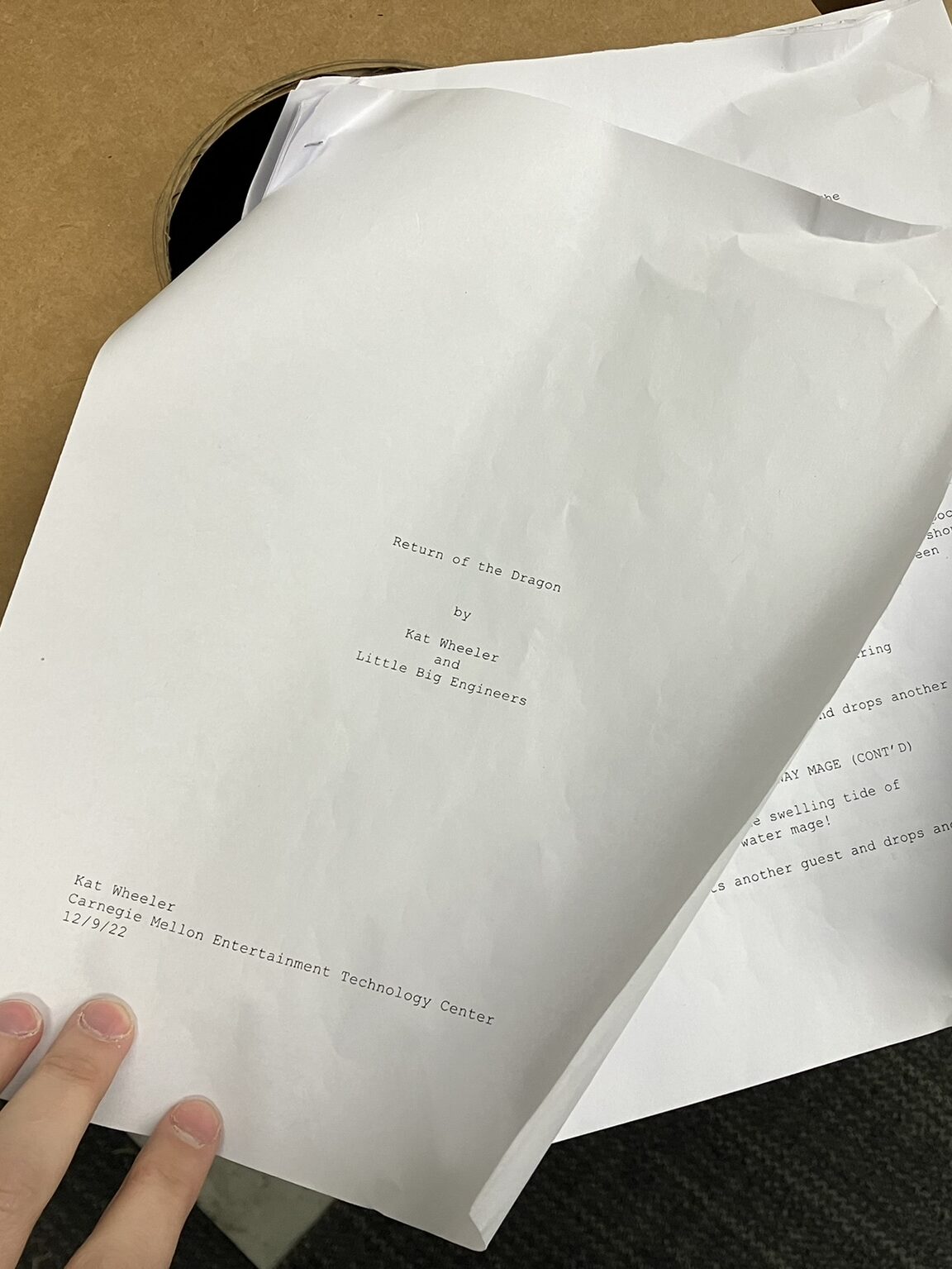
Kat compiled all of the final story information into a script, which the actors had the freedom to improv from. She also put together a worldbuilding bible with a glossary of our fantasy terms and answers to frequently asked story questions we encountered from guests during playtesting. We decided to split the acting up into three main roles, so that training our actors would run smoothly.
First, the Entryway Mage would be responsible for queue management, party size negotiation, delivering a spiel in the hallway, and performing sleight of hand to give the fire, water, and air dragon scales to the guests. Kat and Marie served as our Entryway Mages.
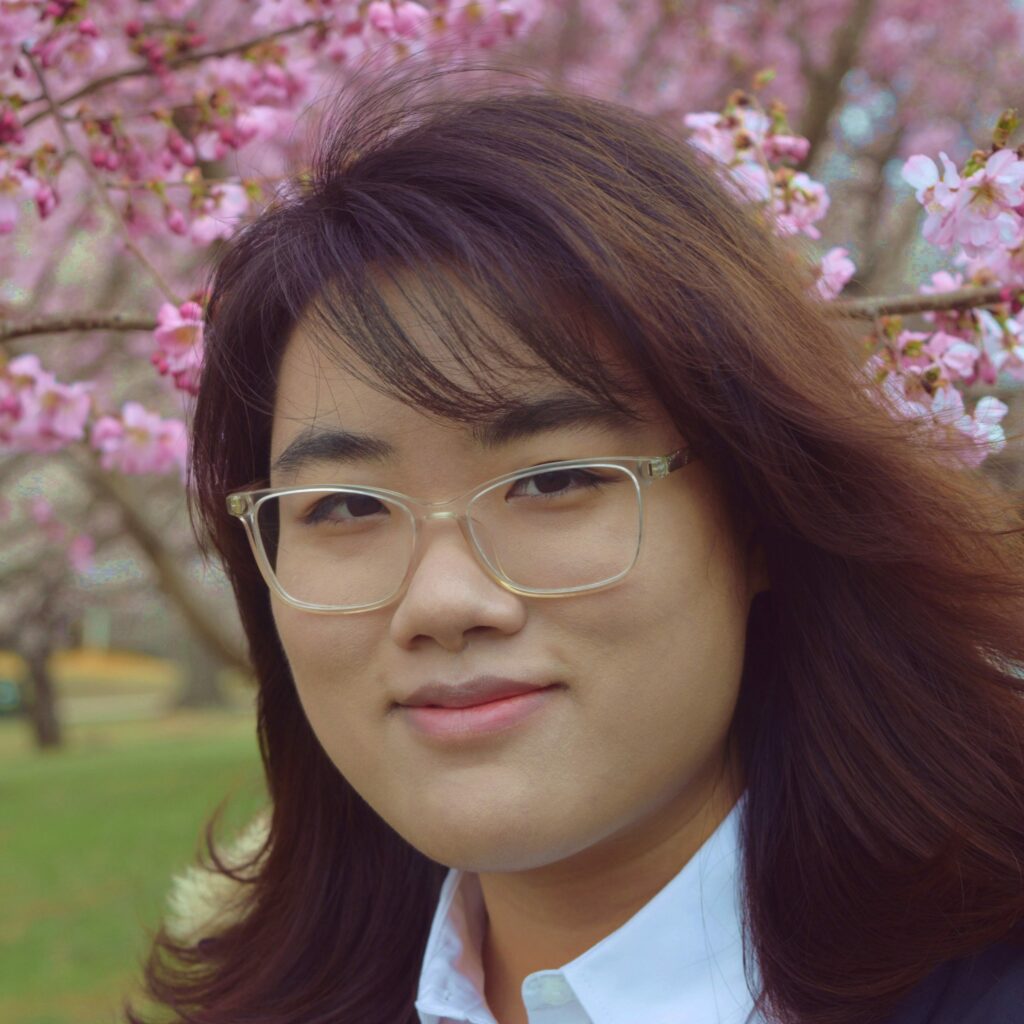
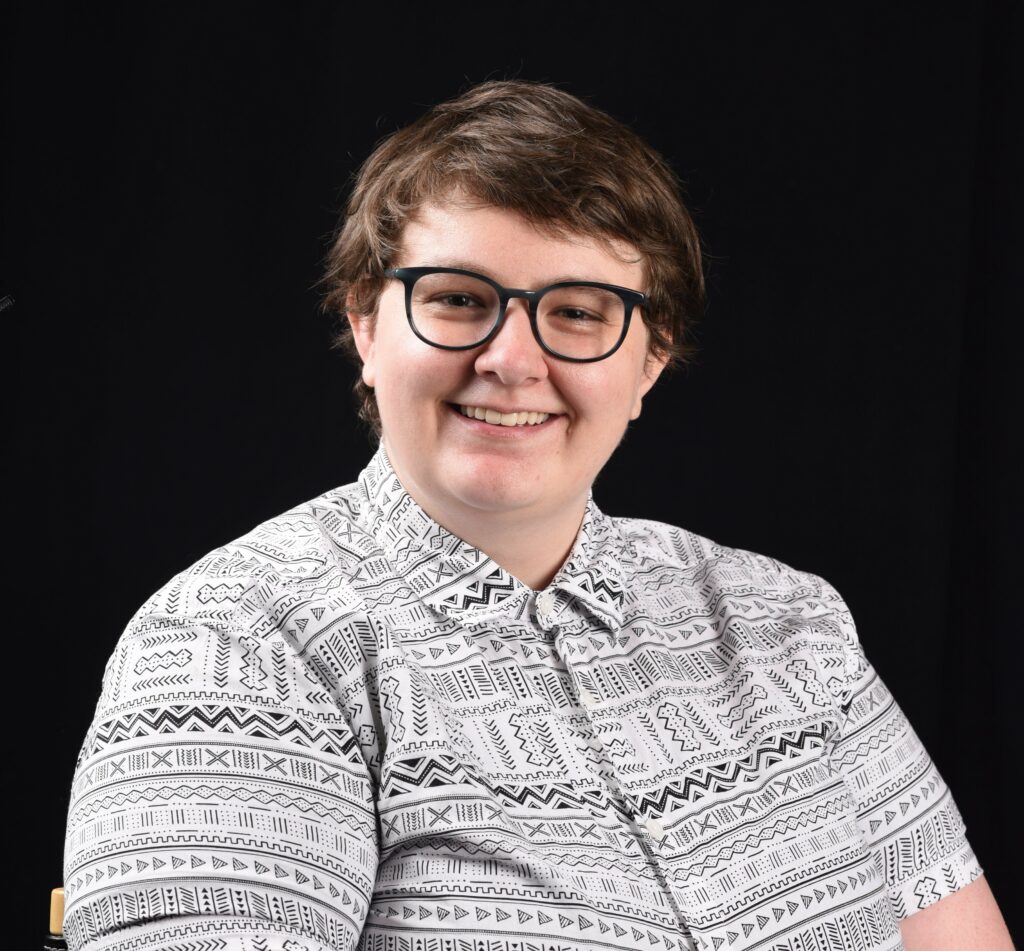
Then, the Tutorial Mage welcomed the guests into the tutorial space, made sure they gathered around the “portal” to watch the preshow video, delivered a spiel to introduce them to tapping into the elements to harness their power, and managed the moment when guests moved into the Puzzle Room. Sarah and Kat served as our Tutorial Mages, a change from the original schedule of Sarah and Kaia, because Kaia became ill.

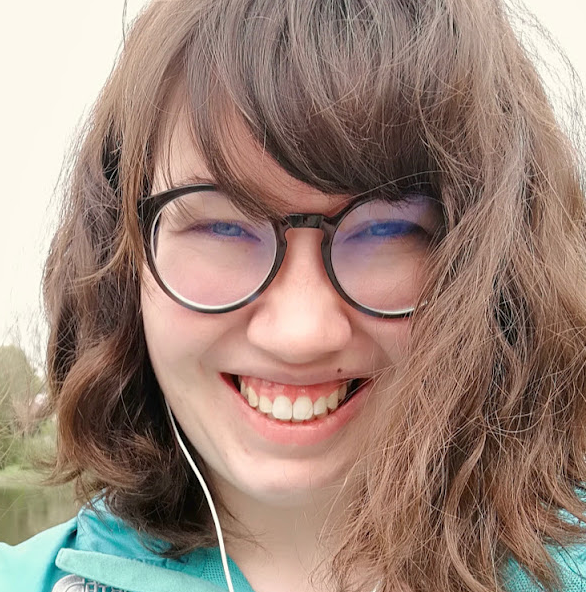
Finally, the Temple Mage stayed with one group of guests as they completed the puzzle, freed the dragon eggs from their cages, and moved into the inner sanctum for the dragon encounter. Simultaneously, another Temple Mage completed the dragon show with the previous group of guests, rotated back to the puzzle room to reset the puzzle with a duplicate set of dragon eggs, and guided the next group of guests through the puzzle. This meant that Temple Mage was not only the most difficult role with two scenes and 16 lines to remember, but that more actors were required for it than any other scene. Despite this difficulty, rotating two actors through both of these scenes allowed for an extremely natural puzzle reset moment, and we found it to be a worthwhile decision. Louise, Derek, Joey, Yukti, and Martina served as our Temple Mages.
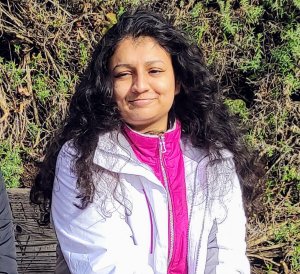
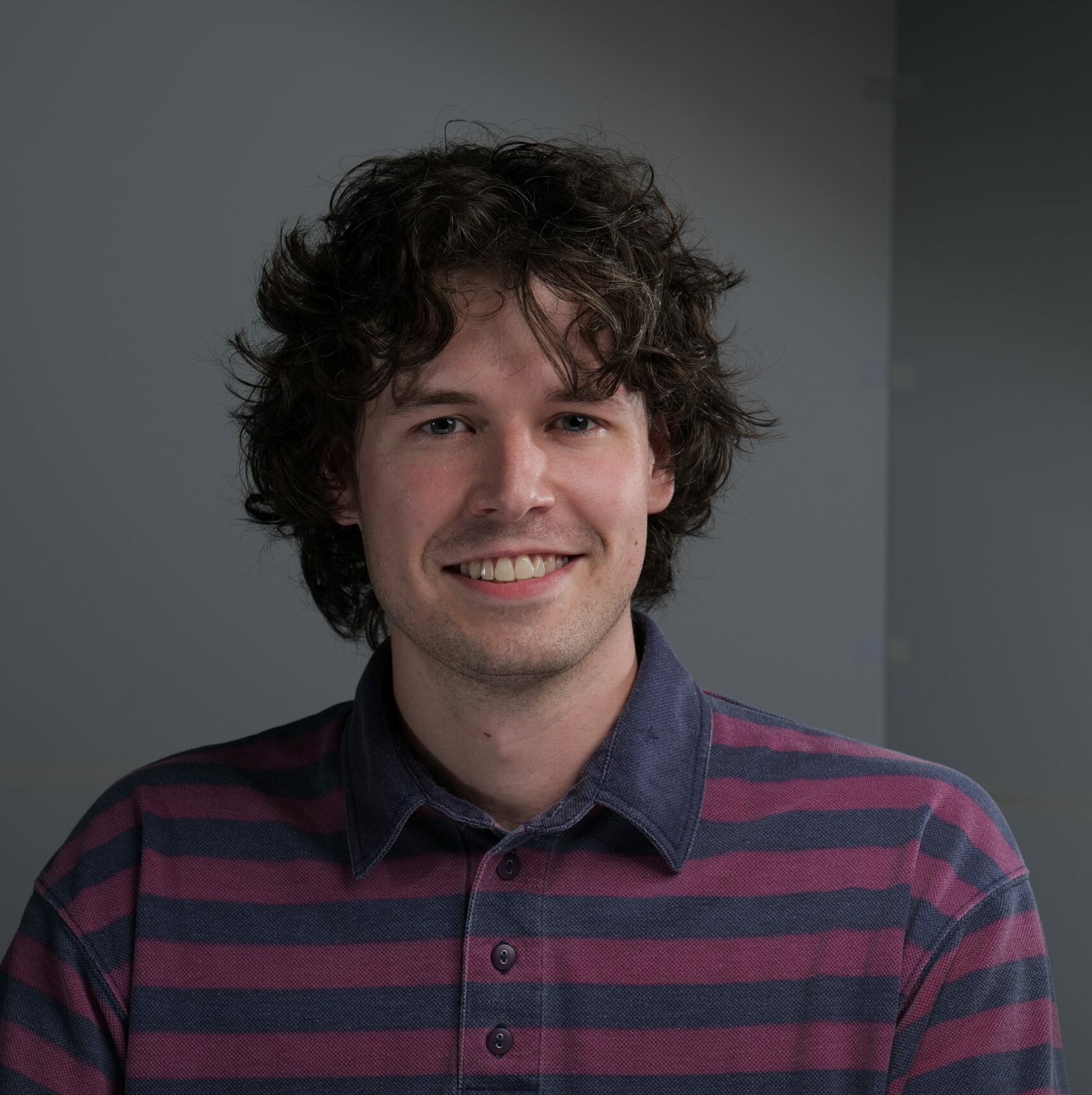
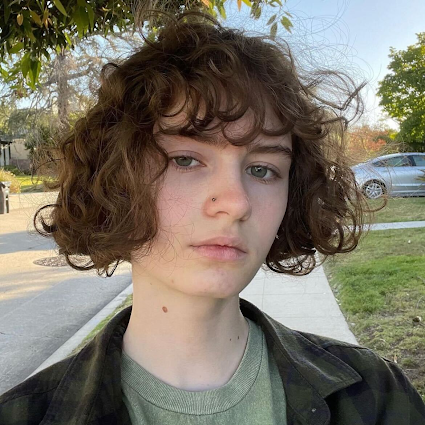
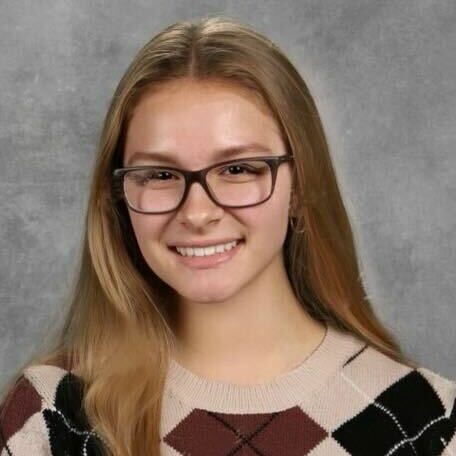
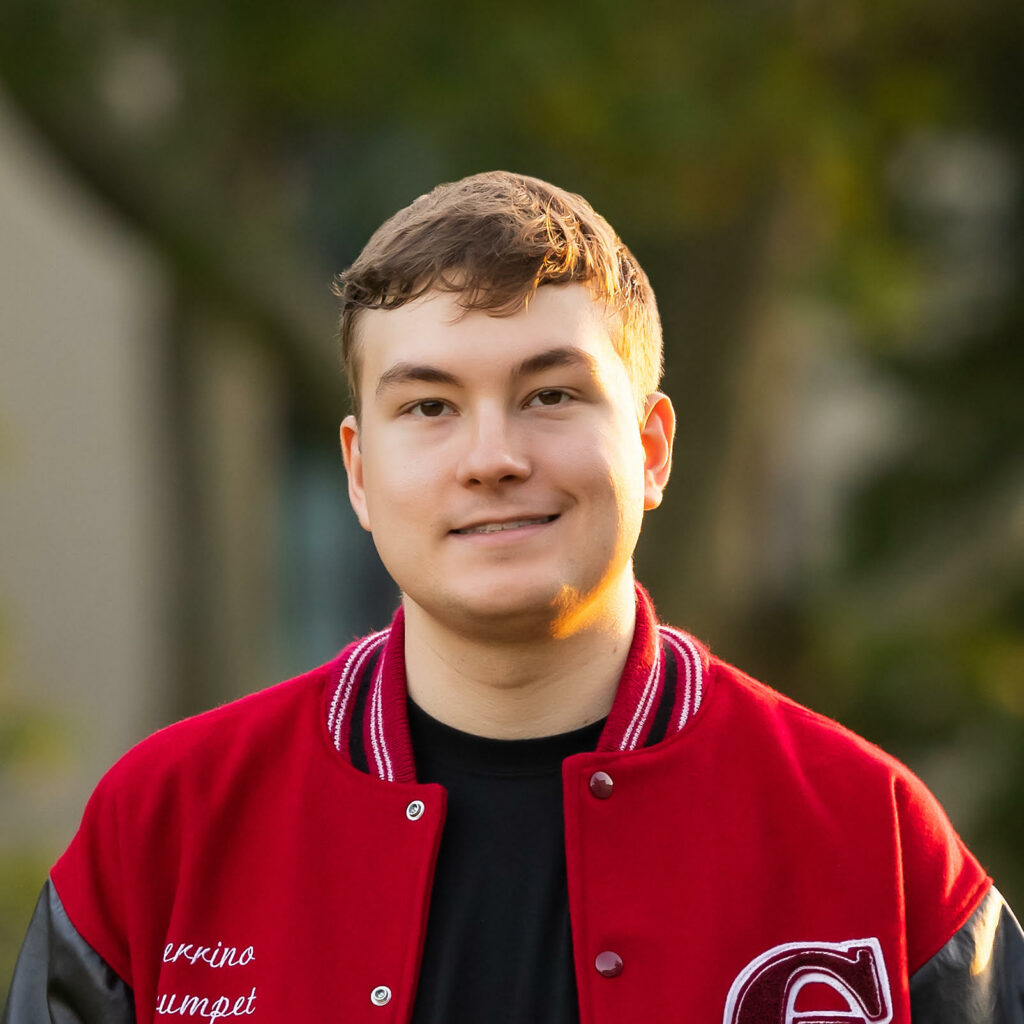
On Monday, we received the unfortunate news that our actor Quinn, recruited from the Pittsburgh improv scene, had a schedule change at their job. As the most experienced improviser and the most experienced acting in fantasy stories, Quinn had been scheduled as a Temple Mage for two hours, so this left us scrambling a bit to replace them.
The final version of our schedule was as follows. One thing to note is that Louise and Derek are only scheduled for one hour each as Temple Mage. This is because Louise puppeteered the dragon during Lori’s dinner break, and Derek had two BVW worlds make it through Jury selection, so we did not want to monopolize either of their time.

Luckily, rehearsals with our other actors went very smoothly! Not all of them could come on the same day, but all of them could rehearse for at least 1 hour and all of them were able to review the script on their own time. We are extremely proud of their work!
Final Playtesting
On Tuesday, we had our final playtest of the semester, a stress and throughput test. We hosted over 20 fellow students and faculty members, running our experience continuously for approximately 40 minutes. We hosted our experience “tour guide” style with Kat and Nolan as the tour guides, rather than the actor and facilitator style we will have on the day of the festival. This was simply because we did not have any actors with us in the building at that time, and we did not have enough team members to serve as the entryway mage, the tutorial mage, and two temple mages. Thus, our throughput was lower than our calculations.
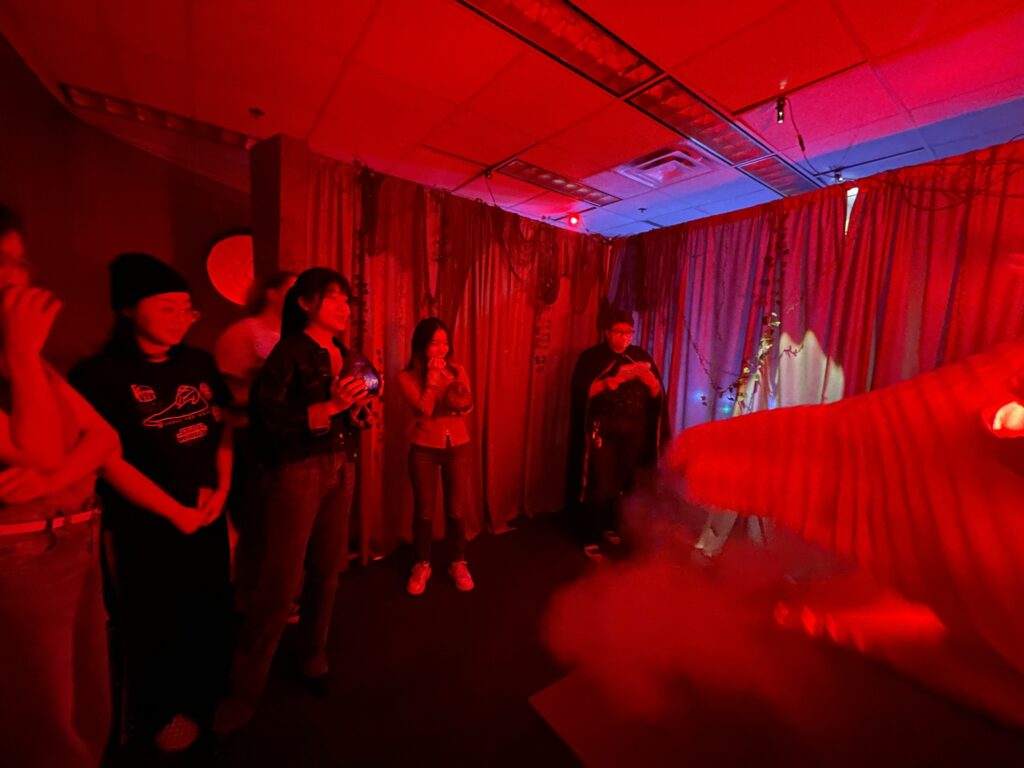
This playtest went really well! We have a few key takeaways:
- Our effort to suspend the puppet’s weight from the pipe and drape instead of the puppeteer paid off! Lori did not find that the experience was fatiguing in any way.
- Running the experience “tour guide style” is too difficult for an inexperienced actor. This was extremely helpful for us to validate our decision to split the roles between so many people, despite the extra logistical demand.
- The audio levels were surprisingly just about perfect on our first attempt, but when the drapes shifted open between the dragon zone and the tutorial video, guests got distracted by the light show. We will be sure to keep this in mind on the night of, and remind our Temple and Tutorial mages to keep gaps in the drapes closed.
- Two of our guests, fellow ETC students Derek and Yukti, enjoyed the experience quite a bit and volunteered as actors! This enabled us to replace Quinn as Temple Mage.
Audio
For audio, Nolan composed new music over the weekend for the Dragon Show. The track begins with individual notes, controlled by Cleo as a digital puppeteer, that play when the three dragon eggs are placed into the nest one by one, and form a D Major chord. When all three notes are in place and the dragon has her realization that the realm is safe once more, the D Major chord builds into a synthesizer based track with the mood of peace in the realm. At first, this was scored with a choral MIDI instrument, but we found that it made little sense that the dragon’s emotions would sound like human voices. We decided not to create “angry” mood music, because the dragon’s roars are enough.
Nolan also added additional roars, contented sighs, and even a dragon snore to the options Cleo has as the digital puppeteer. This addition makes the puppet seem much more real. We did have to adjust the snore’s level versus the dragon show music, and match the cue for one roar to the cue for the fog machine.
In the preshow room, we put our preshow video on a looping PowerPoint, with the other slide as an ambient soundtrack including our music, dragon breathing sounds, and thematic ambience such as wind and flames crackling. This helped disguise the sounds of our actors’ voices from scene to scene.
Finally, our last audio adjustment before Festival was a change to our puzzle scene audio. We weren’t able to complete the projection mapping based feedback system Dave suggested, but we did create new sounds showing that each egg is revived when the correct magic is used. These include a heartbeat sound, as well as the same D Major notes from the dragon show to create continuity for the journey of the eggs. One challenge was getting the solenoids in sync with the audio track. All three solenoids unlock when all three magic combinations are completed, rather than one by one, due to the physically limited window in which a solenoid can stay in the “lock open” position. Yet, the final magic combination was a different length of time depending on which order of eggs the guests chose to solve the puzzle. After some late night trial and error, Cleo’s programming now has the solenoids unlocking perfectly in sync with the audio.
Final set dressings
Louise Cutter was here to help us with set dressing four evenings this week! Surprisingly, our crunch before softs left us with just a small amount of set dressings to complete.
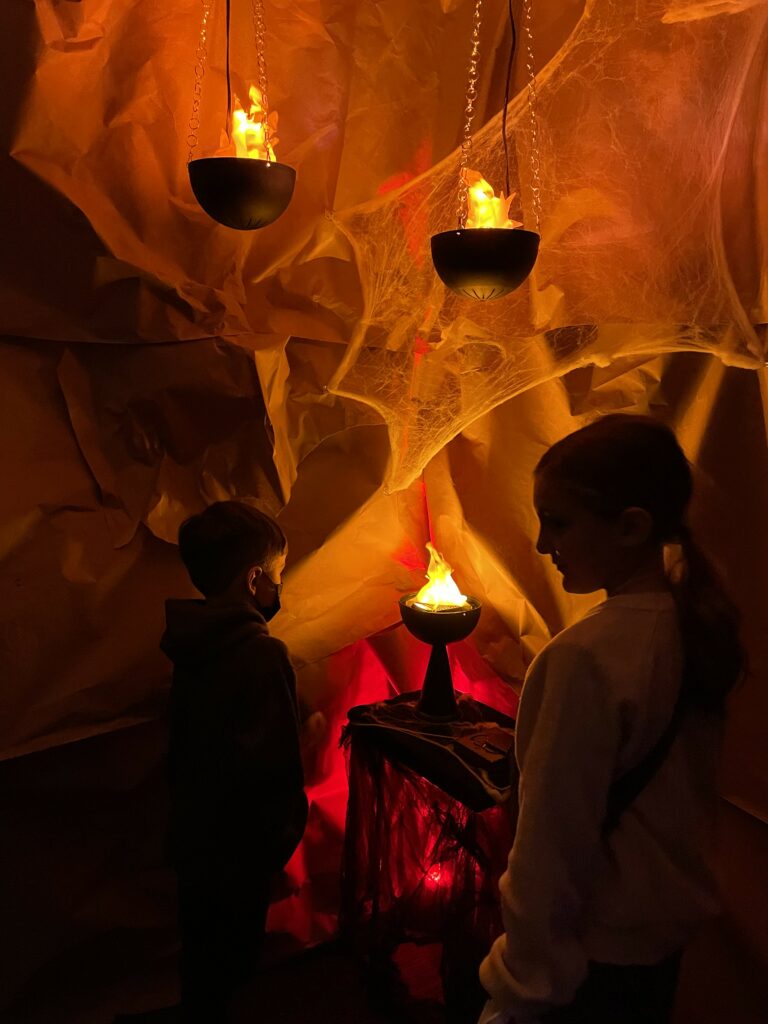
Pedestals for the RFID touchpoints in the tutorial were themed with Halloween Freaky Fabric (aka colored cheesecloth) and single color DMX lights. We also used Halloween fake spiderwebs for added texture in the cave environment of the tutorial.
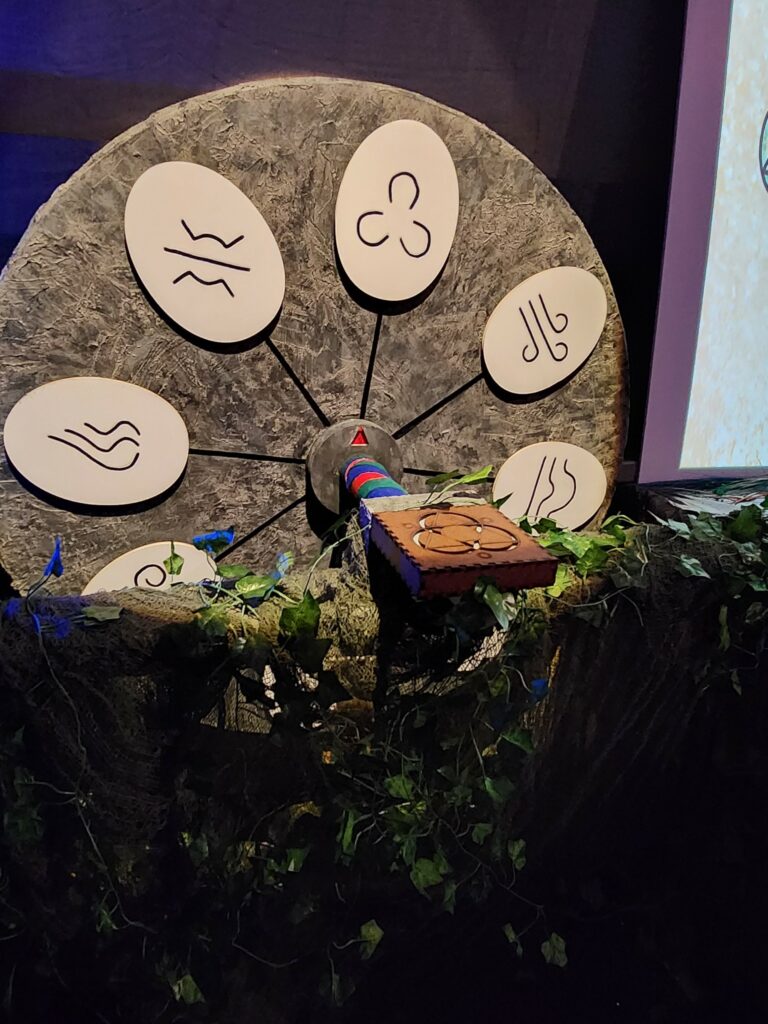
In the puzzle room, we used green Freaky Fabric to create the sense that the ancient Dragon Temple is an overgrown ruin. We ran out of this, but luckily, Amazon Prime came through and the entire puzzle zone and dragon zone is consistently themed. We also borrowed false ivy from the BVW prop room, which surprisingly included several different “species” for a lot of visual interest.
We were also able to complete a lot of set design stretch goals!
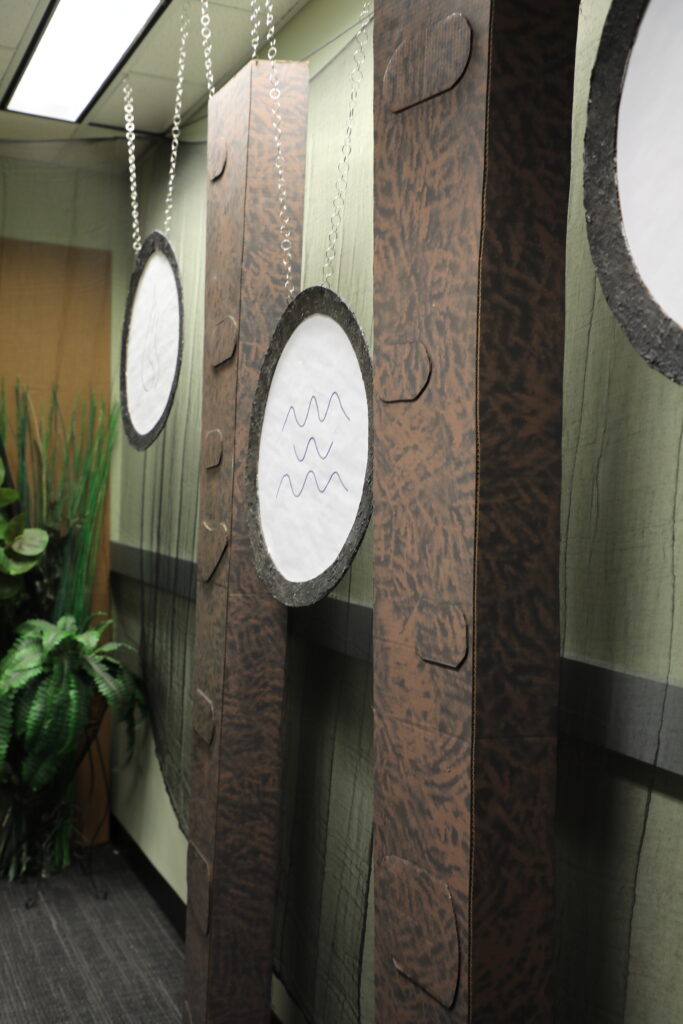
First, In the hall between the puzzle zone and the dragon zone, we used the Monster-Mud-Stone projection frames Kat made back when we were using projectors for our post-show rooms as frames for simple art hung by the ancient mages to celebrate the three elements. Our time spent making a long chain of RFID tag rings as a fidget during meetings paid off, as we used these to hang the three frames from the ceiling and create depth in the wall.
Next, we were able to implement unique lighting schemes in our post-show rooms! We used the ETC’s non-DMX lights, which are controllable by remote and have settings that cycle through red, green, and blue, perfect for our post-show theme of harmony in the realm. Ivy also created a screensaver image for the three monitors, so guests would better understand what they were supposed to be doing.
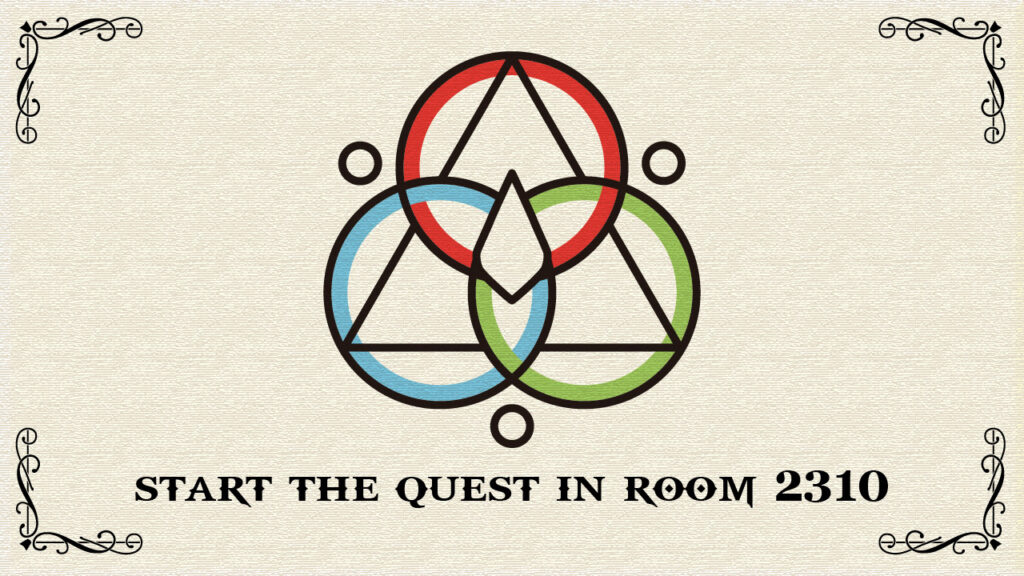
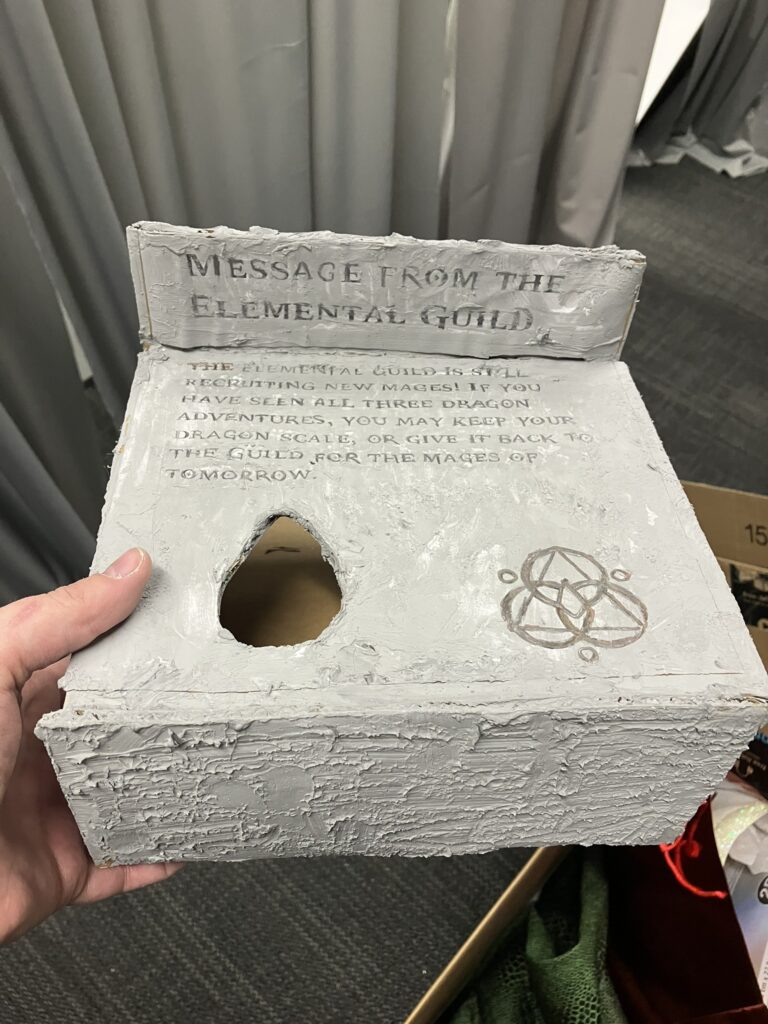
Lori had another great idea for the post-show rooms, which was creating scale return boxes for any guests who did not want to keep their giveaway post show scales. Ivy created a graphic for these boxes, and Kat constructed them from cardboard, covered them in Monster Mud, and went over covered areas of text and symbols in pencil to create the illusion of engraved stone. The whole process took about 2 hours for three themed boxes, all of which was done on Friday morning! If we’d had another 30 minutes, Kat would have liked to dry brush them for more depth of color.
We left the bottoms of the eggs intentionally uncovered with scales, in the hopes that we would have time to drill into the styrofoam and papier-mache to weight them differently, and on Wednesday, we did have that time! We put sandbags into the water eggs for weight, birdseed balls and hand warmers into the fire eggs for a smaller weight and warmth, and nothing into the air eggs so they would be the lightest. Then, we covered the bottoms with our leftover dragon egg scale material.
Finally, when our alumni consultant Christine Barnes arrived to Pittsburgh on Thursday, she suggested using the ETC’s collection of fake potted plants to cover an unsightly section of wall at the end of the dragon temple hallway. This was a perfect idea, because due to throughput through the space, this point was a frequent stopping point for one group of guests to stay as the other Temple Mage was resetting the space.
We are extremely happy with our final set design. We would like to thank Louise for all her work with us through the semester, Christine for helping facilitate important conversations and volunteering her Cricut machine, and Janice Metz, Caitlin Zunic, and Dave Purta for helping us with so many construction logistics.
Post-Show scales
Speaking of Christine Barnes, she helped us cut out foam and sticker paper for our giveaway scales with her Cricut, and generously painted small styrofoam eggs for us to tie to them. At first, we were worried there wasn’t enough sticker paper for all the giveaway scales, but we ended up with a surplus of over 200!
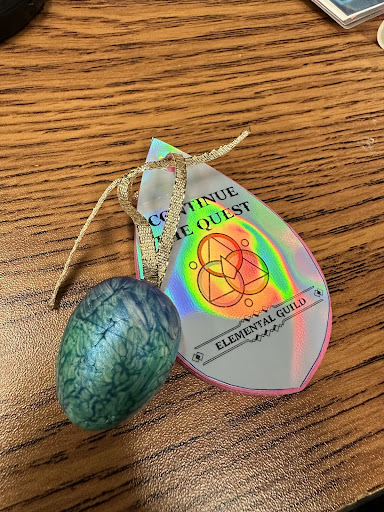
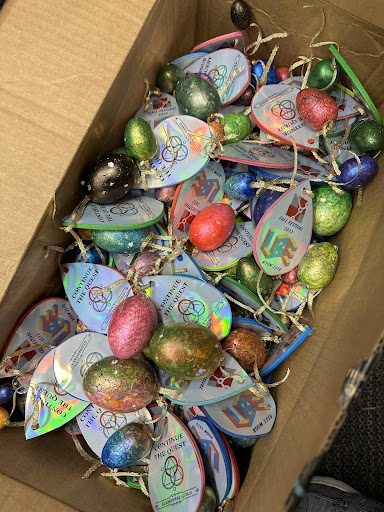
Webcams
Our last big technical challenge was creating a system for the puppeteers to be able to see past the curtain. Nolan and Cleo created a system of three webcams sending a feed to OBS on Cleo’s computer. One was pointed to the entrance of the dragon temple so Cleo knew when to start the dragon’s anger state lights and roars; one was pointed at the nest so Cleo knew when to play each note of the D Major chord and the realization state music, and one was mounted on the dragon’s head so Lori and Louise would be able to look directly at the nest, the Temple Mage actor, and the guests, without bumping into anyone.
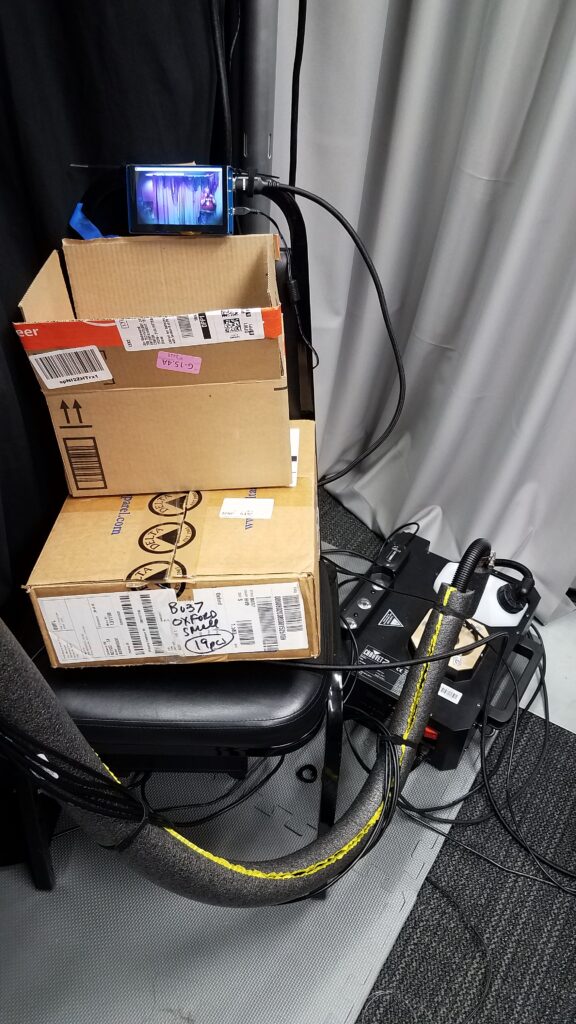
The final webcam did present us with many challenges. First, Cleo’s monitor showing the camera feeds was out of Lori’s line of sight and could not be moved due to the fog machine and the laptop running the puzzle program needing to be closer to the physical puppeteer. Steve Audia helped us experiment with a VR headset running the webcam feed, but that was not a viable solution due to motion sickness. The motion sickness came both from lag and from the fact that the puppeteer could move her head without moving the dragon’s head. Finally, we found a Raspberry Pi mini-monitor that we could hang directly in Lori’s line of sight without putting too much of a weight demand on the pipe, and that was a satisfactory solution.
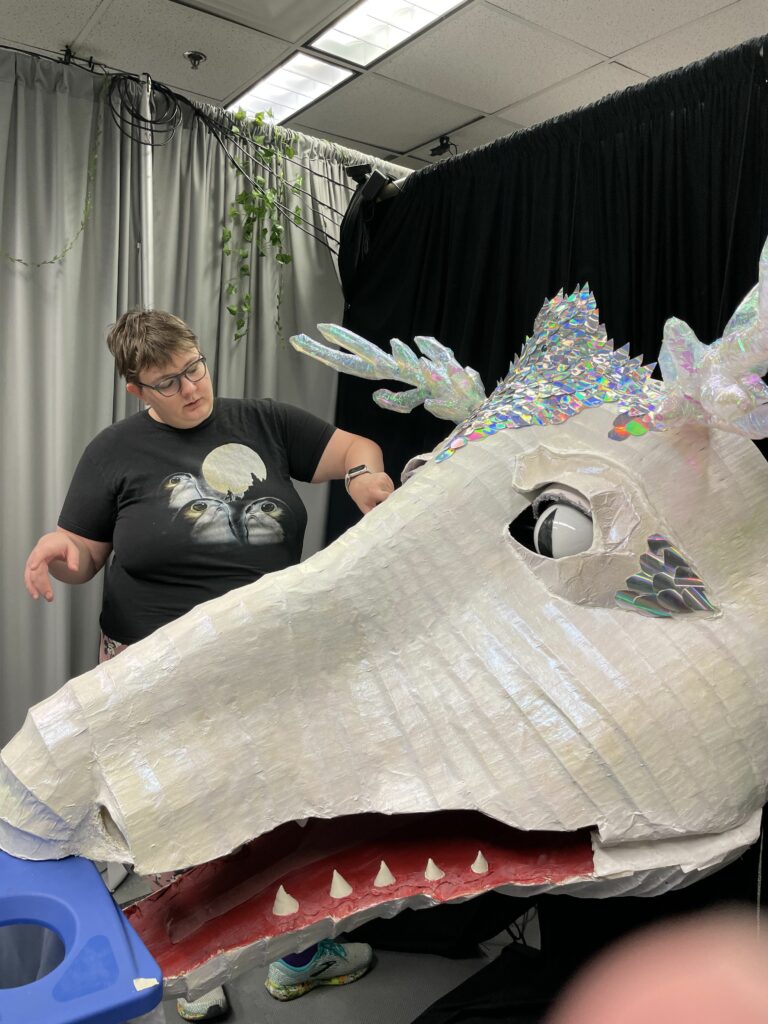
However, guests during our throughput playtest could still see this webcam, even though they did not notice the two other webcams, and even with black tape over the blue webcam lights. So, we decided to construct an iridescent crown for the dragon. This was a puppet design stretch goal from the beginning, to give her a more interesting silhouette, but it turned out to serve multiple purposes. This iridescent crown was constructed by Kat and Ivy from scale shapes cut out of iridescent paper plates and cups from the dollar store, with the hole for the webcam covered in iridescent cellophane left over from the dragon’s horns! To add to the effect, we created some “eyeshadow” for the dragon out of this same iridescent material.
Trailer
Ivy finished our trailer in time for it to play during the festival livestream! We hope you enjoy watching it.
How did festival go?
Festival went incredibly well, in our opinion. Here is a full walkthrough of the event- the only thing missing from this video is the Entryway Mage’s spiel, because it was much too loud in the hallways to record.
Our theoretical throughput max was 270 guests in the 4 hours, but realistically, the themed entertainment industry uses an 80% rule for throughput planning, so we planned on 216 guests maximum. In actuality, we served 171 guests that night– not only did we serve every guest who got in our line and turn no one away, but we also were able to keep a steady pace and never have a wait over 20 minutes. We made an estimated wait time sign as theming for our door whiteboard, and could keep guests informed of the estimated wait in real time.
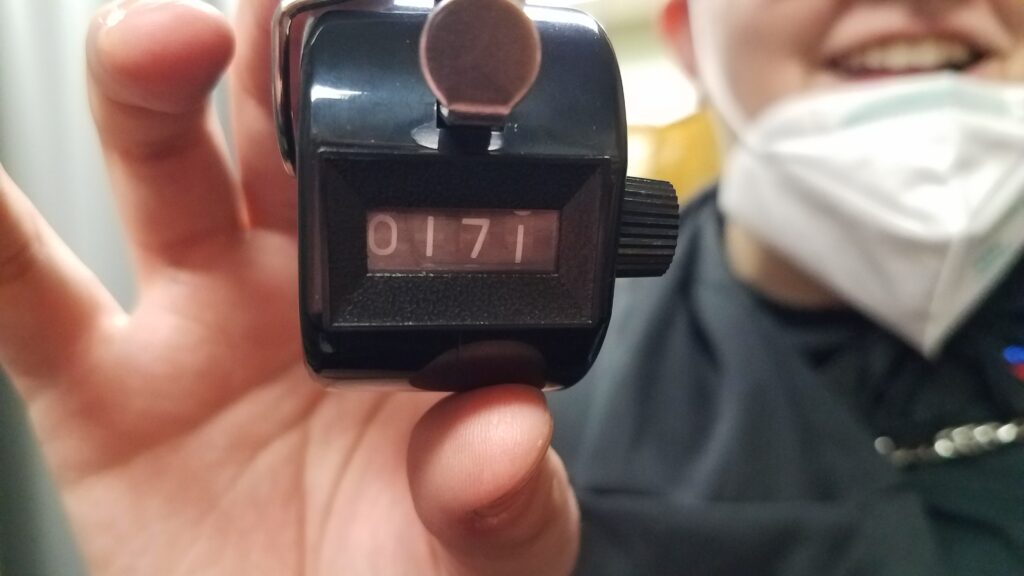
Guest feedback was very positive! Watch one testimonial from a group of Simcoach Games employees and ETC alumni below.
For the post-show rooms, 72 guests tapped their scales in the 2nd floor post show room. We don’t have accurate numbers for the 3rd floor because it was unplugged before the data could be gathered, and the 5th floor monitor went to sleep at some point during the night despite us changing the settings. Given that not every member of a party will tap their scale at a post-show room, we can infer that it’s likely over 100 guests saw our post-show rooms!
We did have some challenges the night of with moving guests through the space. This was planned for, and our actors were able to use the puzzle unlock scale to speed throughput along when guests took far too long on the puzzle. We also anticipated the fact that we would have to completely restart the puzzle program, because as the element with the most complex guest interaction it would be most prone to breakdown. Luckily, with the puzzle running on its own computer, this did not affect the rest of the experience at all, and fixing the issues was as simple as restarting the program.
Goals for next week:
It’s about to be finals week! We need to rest, create our final presentation, and strike the room. After everything we have just accomplished, these seem like extremely achievable goals.
TL;DR
Our last sprints before festival focused on actor rehearsals, audio implementation, webcams for our puppeteers, and collaborating with Louise Cutter and Christine Barnes for our set design stretch goals. Festival went well, with 171 guests and minimal throughput and technical challenges!
